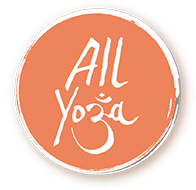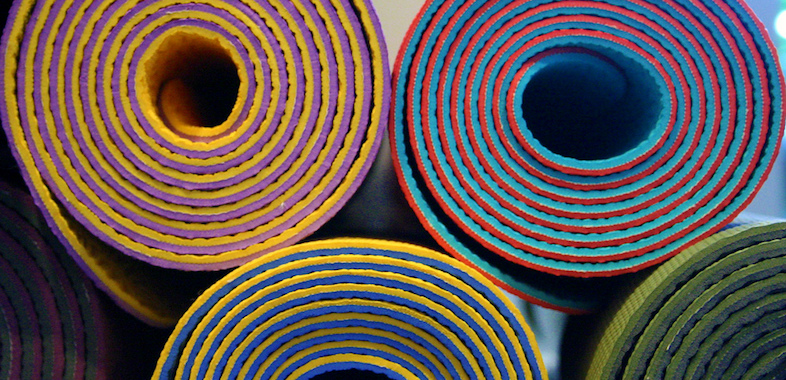How to Pick The Perfect Yoga Matt for your Yoga Teacher Training!
Picking the perfect yoga mat can seem daunting, but it doesn’t have to be. Once you know what to look for, it’s easy to find a mat that suits your needs and preferences. It’s essential to consider the thickness and length of a mat and its material and grip.
With this knowledge, you’ll be able to select a mat that caters to your yoga style and exercise intensity. In addition, picking a vibrant color or eye-catching design will help motivate you for Yoga Training! So don’t worry; with these guidelines in mind choosing the perfect yoga mat is simpler than ever.
Things to Consider When Buying a Yoga Mat
Purchasing a yoga mat can be daunting with all the different styles, materials, and prices. However, it is important to choose one that will best suit your needs—after all, you’ll get the most out of your practice if you are comfortable and appropriately supported. Consider these points carefully when deciding what type of yoga mat is best for you!
Comfort & Support
The most crucial factor to consider when shopping for a yoga mat is comfort. You want something that will support you in any position and provide ample cushioning during your practice. Look for a thick yoga mat with foam padding or perforated surfaces designed to reduce pressure points and improve circulation.
Additionally, some mats have extra features like built-in alignment lines or texture patterns that help keep you more centered during poses.
Grip
Having the correct grip is also essential when selecting a yoga mat. You want something that won’t slip and slide around while you practice but isn’t so sticky that it prevents you from transitioning between poses. Look for mats with a textured surface or rubber grips on the bottom to provide extra traction and stability.
As yoga practices become more dynamic, the grip is essential for proper execution and to prevent injury. Your best ally is a grippy mat that can handle sweat in a hot environment.
Some mats have dots placed on them for correct form, while others, such as the Liforme, feature alignment systems printed onto their surface, which acts as markers to guide you through each pose easily. Investing in one of these specialized yoga mats may just save you from potential slips or falls during transitions, making it an indispensable practice tool!
Thickness
The thickness of a yoga mat is another essential factor to consider. Generally, thicker mats are more comfortable and provide more cushioning, while thinner mats are more lightweight and portable.
Consider how much weight you’ll be carrying if you’re traveling with your mat or how often you typically take classes when selecting the right level of thickness.
Yoga mat thickness varies from 0.5mm to 5mm, depending on the form of yoga you practice. The depth of your mat considerably affects balance, comfort, and even joint health—thicker mats are perfect for therapeutic classes as they provide extra support and ease while maintaining a long pose compared to a regular yoga class.
Length
No matter the thickness of your mat, make sure that it’s long enough for your height. Many yoga mats come in different lengths, so you can find one that suits your body type and practice.
Standard mat sizes are around 68 x 24 inches, which is a perfect fit for most people. A 72- 74-inch long mat could be better suited to your body type if you’re taller than average. Extra wide mats also exist if you want more room while practicing yoga.
Texture
The texture of a yoga mat is also essential. Some fitness enthusiasts prefer smoother mats that don’t irritate long poses, while others like rougher textures for better grip and traction. Consider how the texture will feel on your skin before you make a purchase.
Your Workout Needs
When selecting a yoga mat, you must consider what type of yoga you will perform. Some mats are designed specifically for vigorous workouts like Vinyasa or power yoga, while others are better suited to gentle styles like yin or restorative. Knowing which type of yoga you’ll be doing will help you choose the right mat for your needs.
Durability
When shopping for a yoga mat, durability should also be considered. Cheaper mats may seem attractive in terms of cost, but they usually have shorter lifespans than pricier models and must be replaced more often. Investing in a good quality mat can save you money in the long run as it will last longer and won’t need to be replaced as often.
Material
Mats come in various materials, such as natural rubber, foam, and PVC. Each has benefits and drawbacks. Consider what type of yoga you’ll be practicing when selecting suitable material.
Sustainable, eco-friendly yoga mats are designed to last for at least 12 months with regular use. They may be more expensive than those made of PVC, but the quality is worth it.
These mats have superior grip so that you won’t slip during hot practice, and they’re lightweight and easy to take wherever your journey takes you. Plus, a simple swipe will clean off any sweat after class.
Your Style
When selecting the perfect yoga mat, don’t forget to consider your style. Yoga mats come in various colors, patterns, and designs so you can express yourself while on the mat. Find something that reflects your unique personality and makes practicing more fun and enjoyable!
Budget
Before shopping, decide how much you will spend on a yoga mat. Prices vary greatly depending on the mat’s material, size, and thickness, ranging from $15 to more than $100. Compare different brands and find one that fits your budget without sacrificing quality or performance.
The Bottom Line
When shopping for the perfect yoga mat, consider your workout needs and frequency, texture preference, size and length requirements, durability, material, and budget. Investing in a good quality mat can save you money in the long run as it will last longer and won’t need to be replaced as often. Have fun expressing yourself with colorful and patterned mats that reflect your unique style!
Read More Blogs
Want to Become a Yoga Teacher and/or
Deepen your Yoga Practice?
2 FREE EBOOKS FOR YOU:
- 20 things to know before choosing a yoga teacher training
- 7 tips to deepen your yoga practice right now

Copyright © 2024, All Yoga International ltd. All Rights Reserved
Privacy Policy
